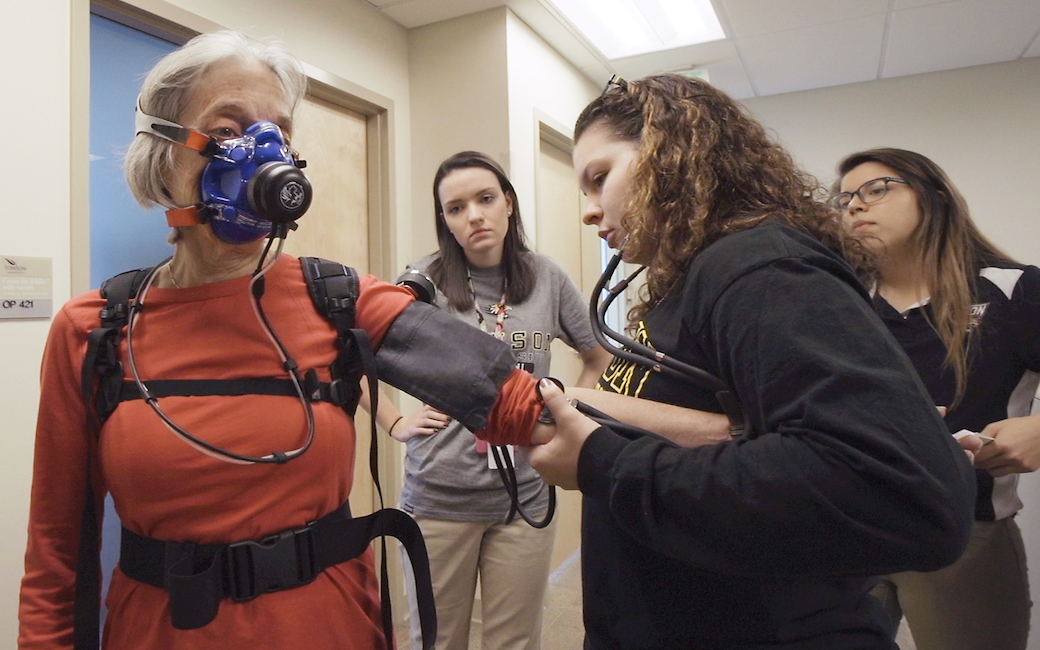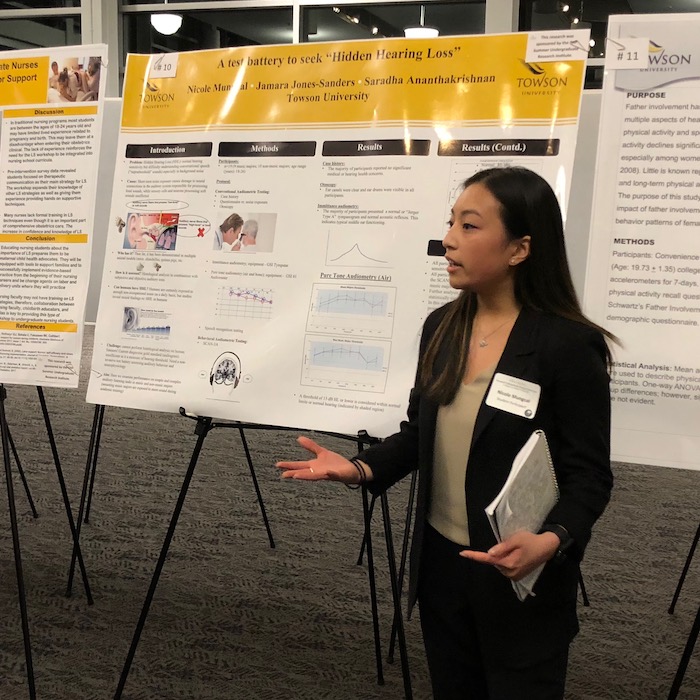Summer research propels students ahead in the fall
The opportunity is a win–win for CHP faculty, undergraduates
By Megan Bradshaw on October 2, 2019

It all began with a trip to Peru.
During the summer of 2014, Towson University College of Health Professions (CHP) professor Devin Dobrosielski took 14 students to Peru to research the impact of altitude on human physiology. The students worked in pairs to develop and propose their own projects, conduct experiments, analyze results and create a presentation poster.
At the time, Dobrosielski told the TU Newsroom, “I think this trip was unique because the students acted as both researchers and research participants. They gained an understanding of the research process and learned how to generate hypotheses and collect and analyze data.”
Dobrosielski and fellow CHP faculty Nick Knuth took that experience and their own observations about research interest among their undergraduates and developed the Summer Undergraduate Research Institute (SURI), with the support of Dean Lisa Plowfield and the financial backing of the college.
Knuth, the institute’s director, and Dobrosielski began a pilot program in summer 2015, reaching out to colleagues with ongoing research.
Each summer students work 10–20 hours per week for 10 weeks, receiving a stipend from the college. They complete research with a faculty mentor, who also receives a small grant toward supplies and equipment.
The number of student participants jumped from four in 2015 to 17 by 2018—SURI’s first year open to all CHP faculty.
SURI’s programming has evolved as well. It began with weekly journal clubs but grew to include weekly research progress presentations in 2017.
By 2018, there were biweekly seminars featuring topics related to research—how to use databases, ethics/compliance, article reviews, differences between/benefits of qualitative and quantitative research and the resume building and grad school application processes.
Students also learned from librarians about how to find literature, attended a lecture on research methods/research publication/interpreting journal articles and listened as career center staff presented on how to include research on resumes and grad school applications.
This past summer Knuth condensed those seminars into a one-day boot camp and reinstituted the journal club, this time on a biweekly basis.
Participating students have presented their findings since the beginning; in 2015, all four students presented at regional or national conferences, with one winning a regional undergraduate research award. In 2016, three of the students were nominated for undergraduate research awards at their conferences.

Students began presenting at CHP’s Undergraduate Research Symposium and Networking event in January 2018 and 2019.
Health sciences associate professor Mary Helen McSweeney-Feld and audiology assistant professor Nirmal Srinivasan have participated the last two years.
McSweeney-Feld has had two projects funded by SURI—an examination of the impact of the Maryland Generator Law on long-term care facilities in 2018 and, this past summer, a test of the effectiveness of a classroom activity on a current topic in healthcare education: the social determinants of health.
Chase Suissa—McSweeney-Feld’s 2019 student research assistant—learned about the SURI opportunity at the end of his freshman year through his adviser Andrew Jones, McSweeney-Feld’s project collaborator.
“I leaped at the opportunity,” says Suissa. “It’s great to do research as a sophomore; I feel so much more ahead of the game.”
He worked on survey building, determining how to make the survey results confidential and is now doing data entry.
“I’m so glad to have Chase. He has the maturity to grab onto an experience like this,” says McSweeney-Feld. “It is an excellent opportunity for him now and for the rest of the year. It gives him a terrific background to build from on his next research project.”
Srinivasan has been working on the same project the last two years, a continuation of work he started before arriving at TU. According to Srinivasan, the goal of this project is to come up with and validate tests that shows robust relationships between temporal processing measures and speech intelligibility.
He and his students have been testing an iPad app containing several auditory evaluations. TU is one of several sites around the country collecting data to see if the results received are reliable, which would mean the application would be helpful in clinics, to researchers without access to full labs and to students during their training.
Nicole Wiland—one of Srinivasan’s summer 2019 students—found her SURI experience to be highly valuable now and for her future.
“I got a chance to get into our audiology testing booths and labs to work with some equipment,” she remembers. “That actually gave me a huge leg up in all my audiology classes this semester. I felt like I was further ahead, and the articles and readings they gave us to read over the summer makes me feel prepared.